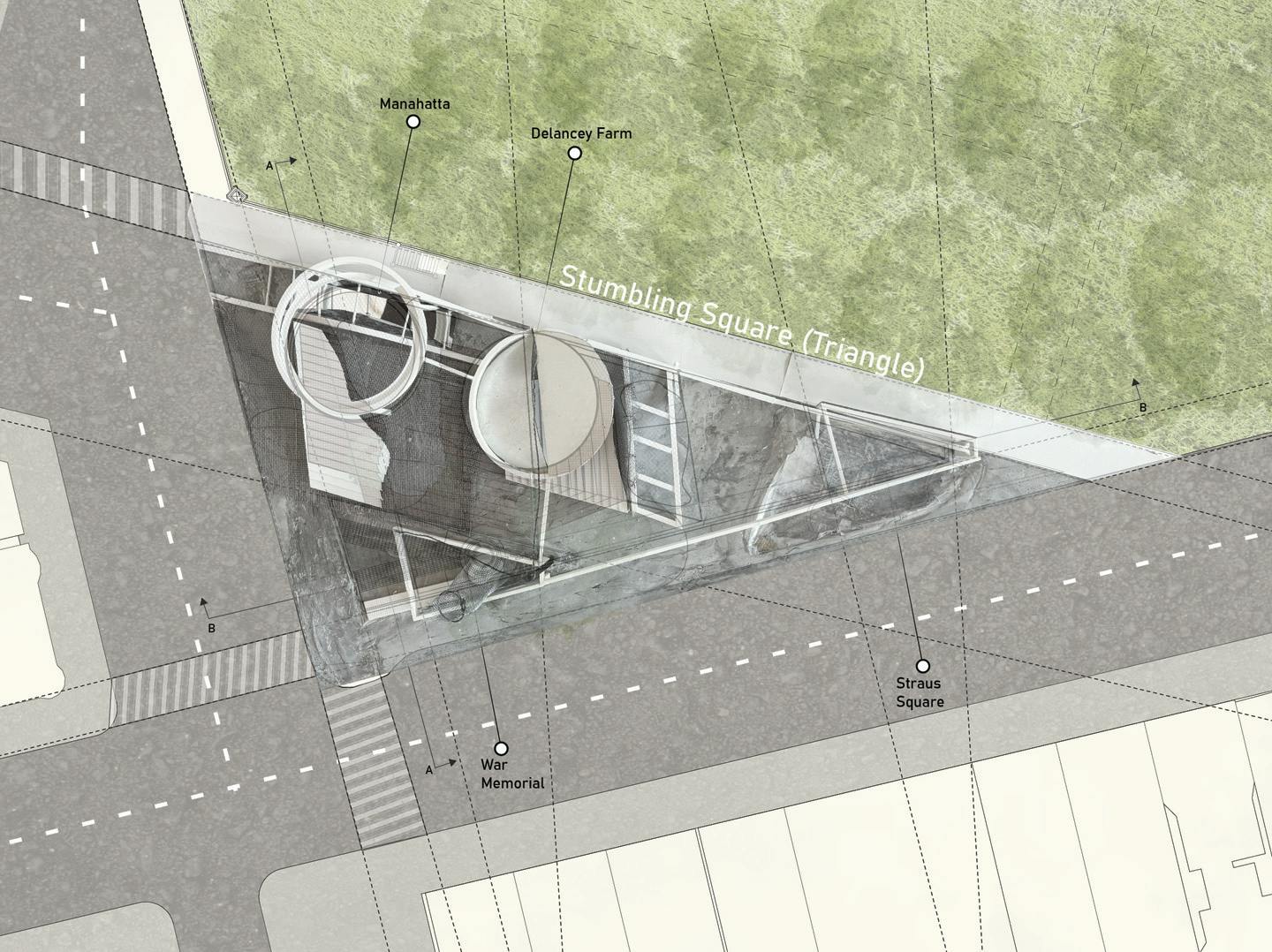Stumbling Square (Triangle): Framework for an Architecture of Humor

An architecture of humor is one that rejects a horror-based approach to building solemnly, instead employing seductive aesthetics to invite unexpected, joyful, grounded interactions with context and other people. if horror is a fact of life, humor is a choice within it.
Principles of designing with humor include:
• Benignly violating expectations (from Peter McGraw and Caleb Warren)
• Fusing seemingly disparate frames of reference (from Arthur Koestler)
• Inviting (mis)use (from Geoff Manaugh)
• Grappling with taboo subjects (from Sigmund Freud)
With humor as an aesthetic and operational framework of analysis, design, and (mis)use, The Stumbling Square That Is Actually A Triangle: Framework for an Architecture of Humor unfolds as an Urban Set that hijacks a small patch of non-space on East Broadway just south of Seward Park on the Lower East Side. The site, currently named Straus Square, contains overlapping, obfuscated layers of decontextualized history that exist in invisible tension with one another. I like to think of them as ghosts.
Through my interventions, I imagine a simultaneity of uses, sanctioned and less so, engaging and not engaging with the interpretive material, playing host to discourses both complementary and contradictory. Questioning norms in the urban context to create moments of awkward friction might inspire within users a curiosity that they forgo in the landscape of urban life. These encounters—whether observing the growth of plants on an exaggerated topography as it affects the growth of plants below, the tilt of a mirror that determines who and what is reflected back, the level of water that distorts historical imagery in a shallow reflecting pool, or a scrim that changes the power balance of which side sees the other—are optional, low stakes, and achronological, serving as a means of guiding and facilitating discovery rather than a didactic sledgehammer.